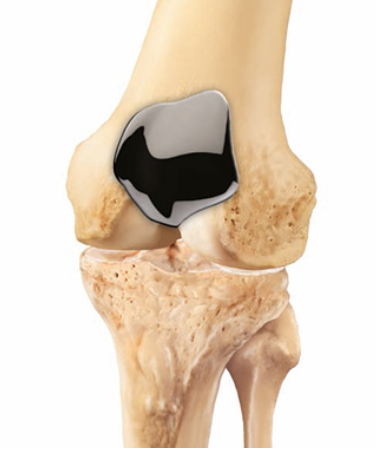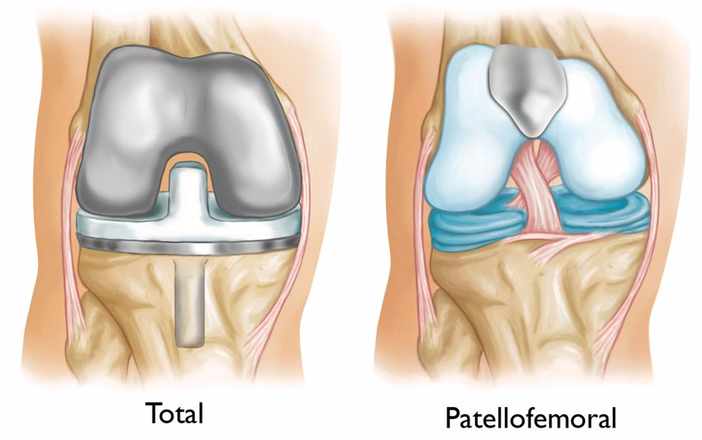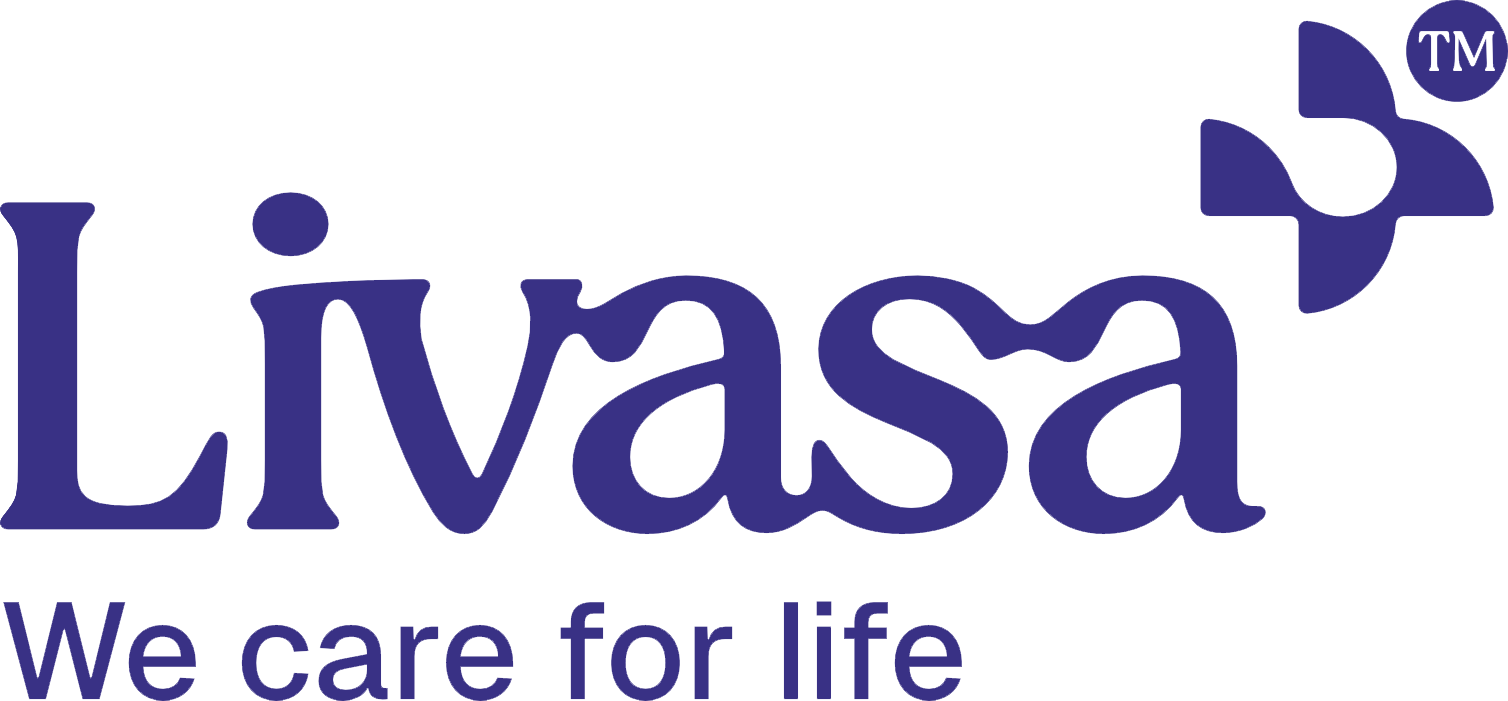-0_166562001721046427.jpg)
Patellofemoral Resurfacing
 During knee replacement surgery, damaged bone and cartilage is resurfaced with metal and plastic components. Patellofemoral resurfacing is a type of “partial” knee resurfacing in which only a portion of the knee is resurfaced. The procedure is an alternative to total knee replacement for patients whose damaged bone and cartilage is limited to the underside of the patella (kneecap) and the channel-like groove in the femur (thighbone) that the patella rests in.
During knee replacement surgery, damaged bone and cartilage is resurfaced with metal and plastic components. Patellofemoral resurfacing is a type of “partial” knee resurfacing in which only a portion of the knee is resurfaced. The procedure is an alternative to total knee replacement for patients whose damaged bone and cartilage is limited to the underside of the patella (kneecap) and the channel-like groove in the femur (thighbone) that the patella rests in.
Because patellofemoral resurfacing is done through a smaller incision, there is less damage to soft tissues in the knee. In many cases, this allows patellofemoral resurfacing patients to recover faster and return to normal activities more quickly than total knee replacement patients.
There are a number of treatments for knee osteoarthritis. Your doctor will talk with you about the options that will best relieve your individual osteoarthritis symptoms.
Anatomy

Medial compartment—the inside part of the knee
Lateral compartment—the outside part of the knee
Patellofemoral compartment—the front of the knee between the patella (kneecap) and femur (thighbone)
(Left) A normal knee joint. The medial, lateral and patellofemoral compartments are shown.
(Right) An x-ray of a normal knee showing healthy space between the bones.
Within the patellofemoral compartment, the patella lies in a groove on the top of the femur called the trochlea. When you bend or straighten your knee, the patella moves back and forth inside this trochlear groove.
Description
In knee osteoarthritis, the cartilage protecting the bones of the knee slowly wears away. As the cartilage wears away, it becomes frayed and the underlying bone may become exposed. Moving the bones along this rough surface is painful. This can occur throughout the knee joint or just in a single area of the knee.
Illustration shows osteoarthritis that is limited to the patellofemoral compartment of the knee. The patella (kneecap) has been removed to show the cartilage damage on the underside.
Advanced osteoarthritis that is limited to the patellofemoral compartment may be treated with patellofemoral resurfacing. During this procedure, the underside of the kneecap and the trochlear groove are resurfaced with metal and plastic implants. The healthy cartilage and bone, as well as all of the ligaments in the rest of the knee, are preserved.
(Left) This x-ray shows a normal knee from the side. The arrows point to the normal amount of space between the bones.
(Right) This x-ray shows narrowed joint space and bone rubbing on bone due to arthritis.
Advantages of Patellofemoral Resurfacing
Potential advantages of patellofemoral resurfacing over total knee replacement include:
- Less blood loss
- Quicker recovery
- Smaller surgical incision / less surgical trauma
- Decreased complications
- Increased knee function and activity

In addition, because the bone, cartilage, and ligaments in the healthy parts of the knee are kept, many patients report that a patellofemoral resurfacing feels more natural than a total knee replacement.
One advantage of patellofemoral resurfacing over total knee replacement is that healthy parts of the knee are preserved, which helps to maintain more “natural” function of the knee.
Candidates for Surgery
If your osteoarthritis has advanced and nonsurgical treatment options are no longer relieving your symptoms, your doctor may recommend knee replacement surgery.
Careful patient selection is crucial when considering patellofemoral resurfacing. In order to be a candidate for the procedure, your arthritis must be confined to only the patellofemoral compartment of your knee.
Patella resurfacing can be via both an Onlay and Inlay technique as per the requirement of the patient.

Dr. Manuj Wadhwa
Chairman & Executive Director Elite Institutes of Orthopedics & Joint Replacement- Livasa Hospitals, Punjab
- Ojas Hospitals, Panchkula
Awards Wining Doctor
- 2 Times World Book of Records
- 7 Times Limca Book of Records
Let’s Get In Touch

Sector 71, Mohali
09:00 am - 04:00 pm
(By Prior Appointments)

Sector 22, Panchkula
09:00 am - 04:00 pm
(By Prior Appointments)
Email us
Give us a Call
Book An Appointment








